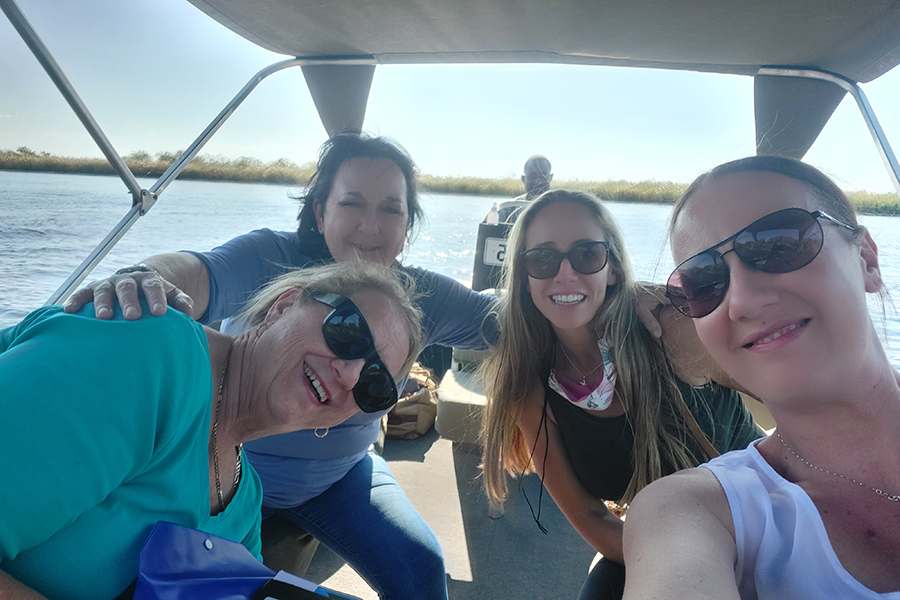Estimated reading time: 11 minutes
The Masai Mara is one of the world’s most famous wildlife frontiers, where massive herds of wildebeest, buffalo and zebra still roam free and lions retain their ancient post at the top of the animal food chain.
Go2Africa staffer Carlien Parsons was lucky enough to spend time at four outstanding lodges in the Mara during January, which is a classic ‘green season’ month: the vegetation is lush, the plains game well fed, the waterholes full and the lions content. This is what she saw…
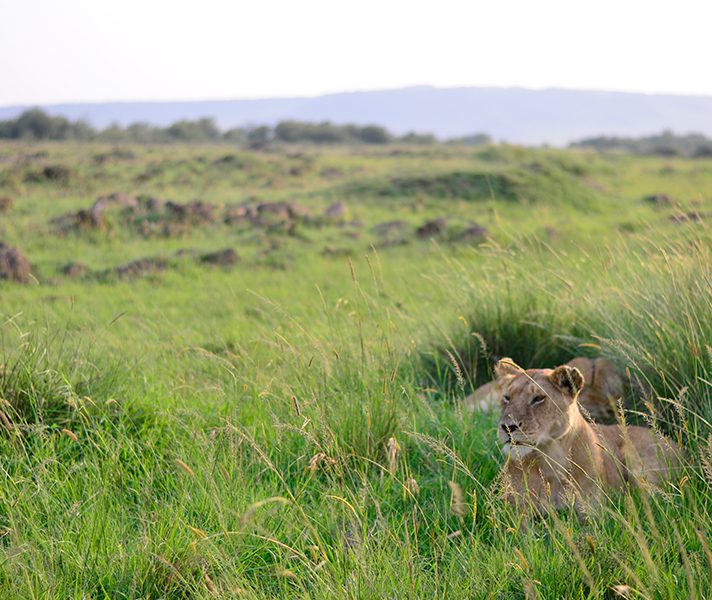
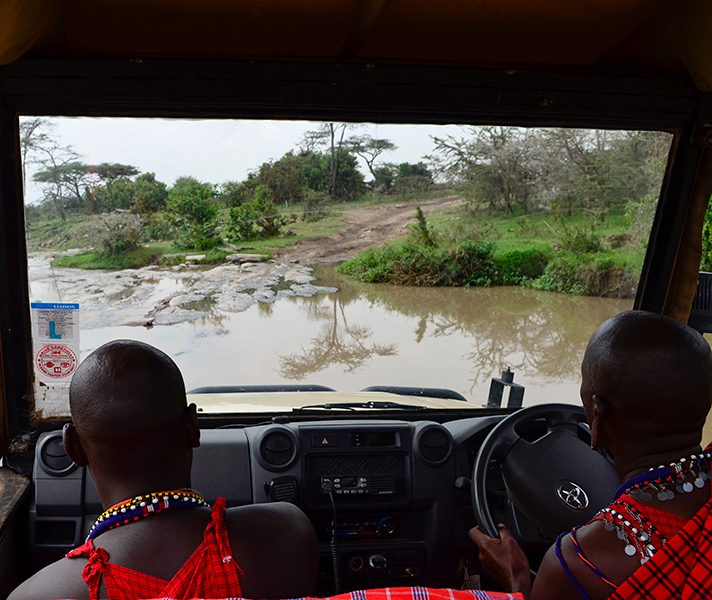
Very early out on game drive one morning, I was the lucky one to spot these three brothers. From afar, they looked like three termite mounds but, as we got closer, I realised they were lions. My first spot before a tracker or guide! These boys got up, played around and crossed the river into the Naibosho Conservancy.
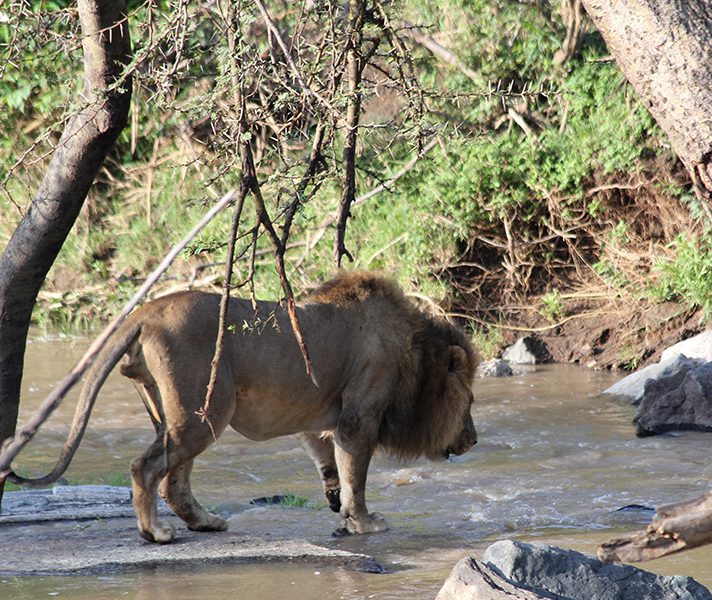
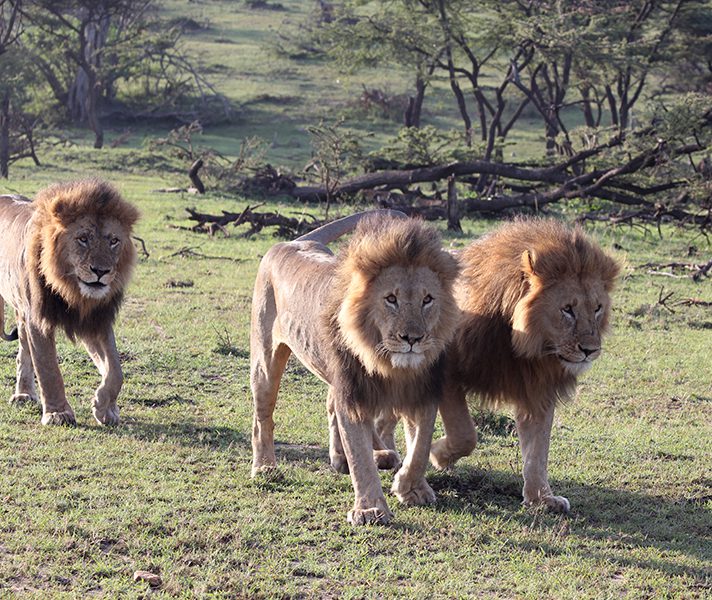
Porini Mara Camp in the Ol Kinyei Conservancy
‘The Ol Kinyei Conservancy is a private concession jam-packed with lion sightings. Our guides, Bill and Tipa, showed us many different prides, each with their own story and dynamic. The fact that Porini Mara is the sole camp in a huge concession makes the game viewing extra special: you can stay at a lion sighting for as long as you want, observing their behaviour and watching as they prepare for a hunt.’
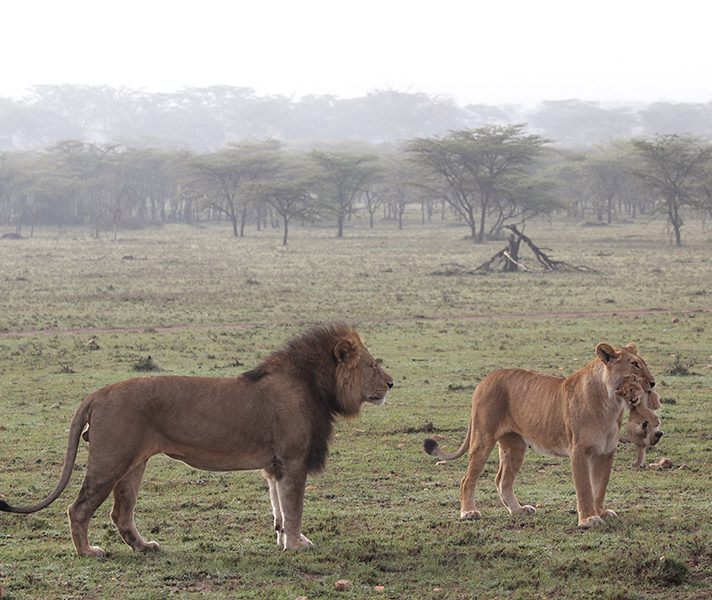
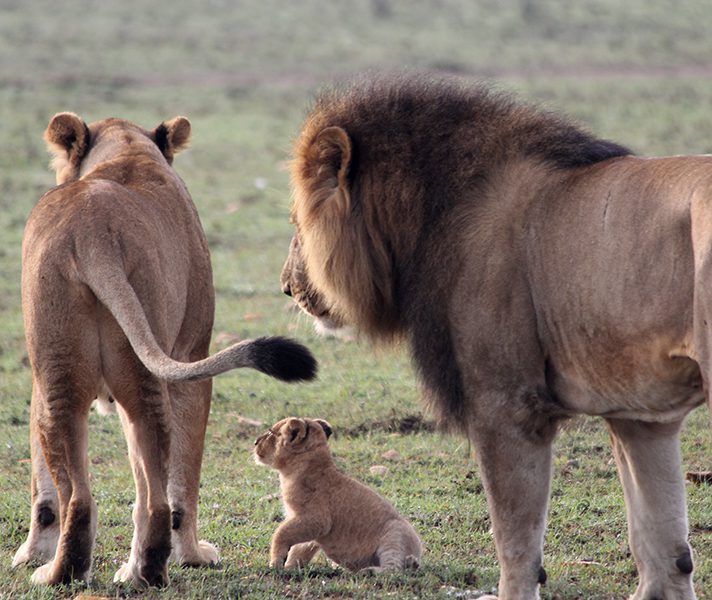
Researchers surmise that lions may kill cubs to bring the female back into oestrus sooner so that they can mate again. Studies show that as few as one in every eight cubs will make it to adulthood (not all killed by males, of course). Male lions are also apparently not uniformly fertile: as few as one in five is capable of impregnating a female successfully. These high mortality and low fertility rates are two factors for male lions wanting to mate as much and as soon as possible, to ensure their progeny survives.
Porini Lion Camp, Olare Motorogi Conservancy
‘Cubs everywhere! Porini Lion Camp shares a private concession in the Olare Motorogi Conservancy with a couple other camps and, as the name states, this is lion country.
Our first encounter was with a family with loads of teenagers or sub-adults and little ones with one particularly inquisitive cub. He approached our vehicle to get a closer look at this funny looking ‘animal’…
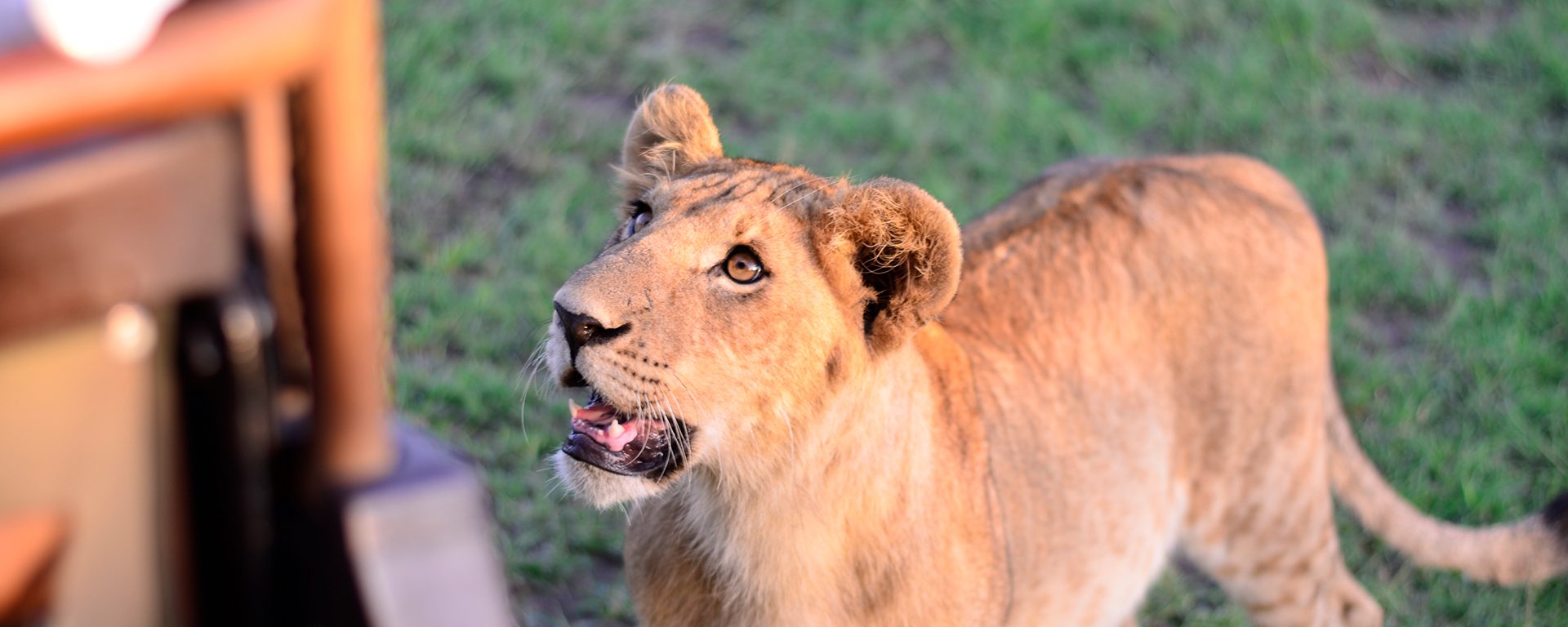
‘En route back to camp, our eagled-eye spotter saw a leopard bunched up in a tree, keeping a very beady eye on a lion sleeping below. Both big cats are skilled opportunists and it’s not unheard of for them to try and steal each other’s kills.’
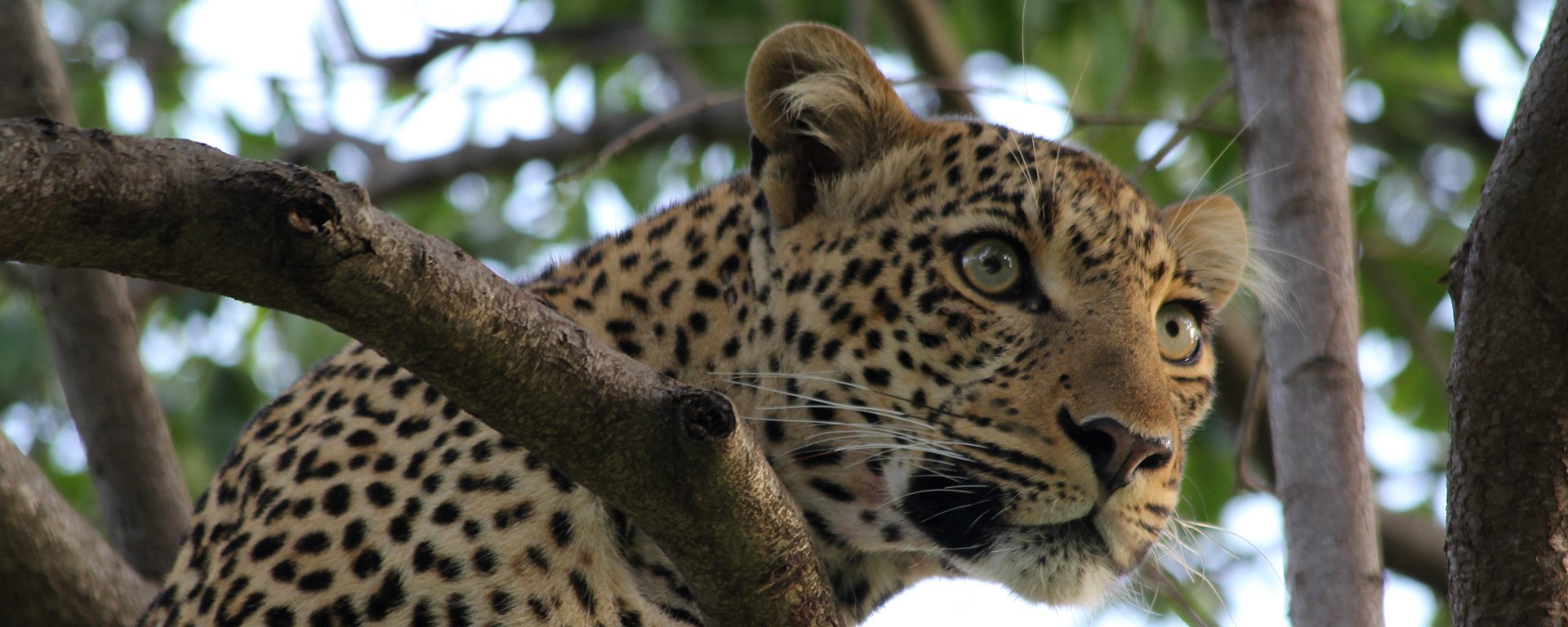
Serian Mara North Conservancy
The Serian Camps share the Mara North Conservancy with a couple of other camps, and conservation and building sustainable partnerships with the Maasai community are a fundamental part of the Mara North’s successful operating model.
‘January in the Mara is a wonderful time to see babies. We were spoilt with a sighting of very tiny lion cubs whose mother kept them out of harm’s way but we did manage to get a glimpse of this little guy!’
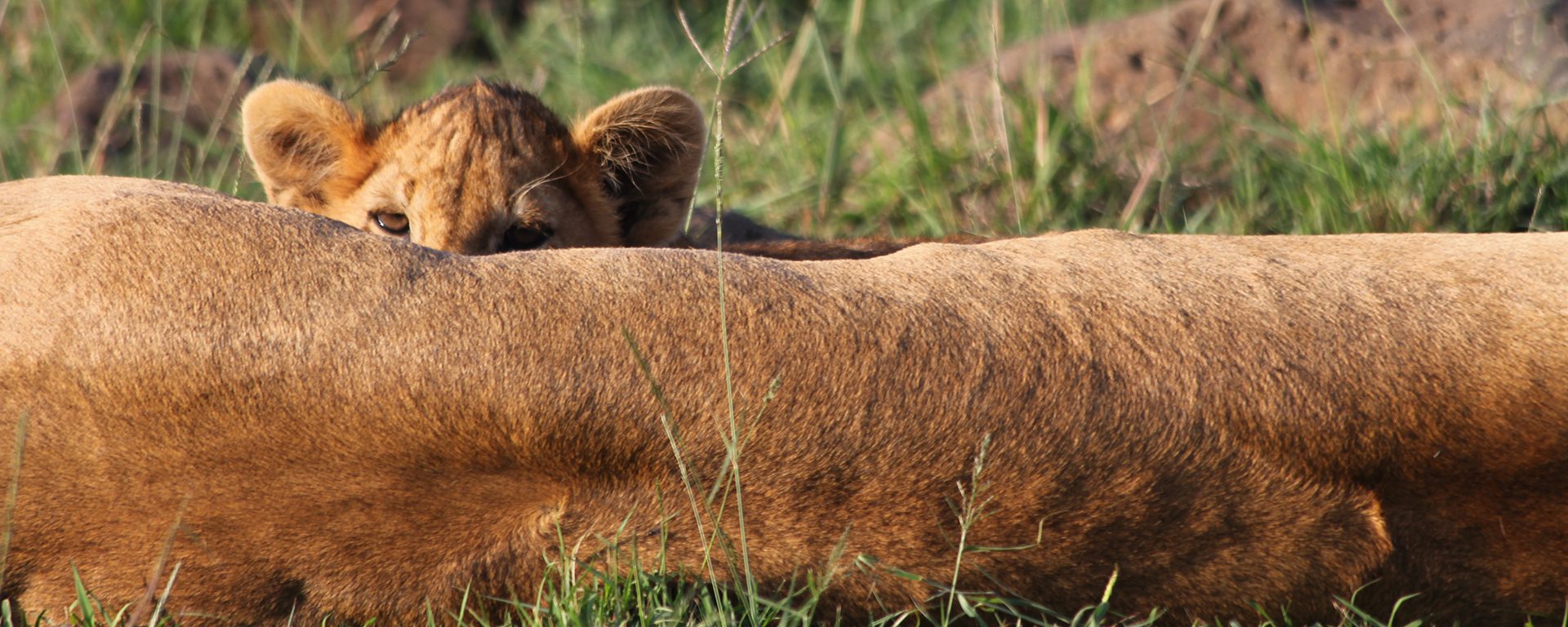
Cubs are born after a gestation period of about 110 days and are blind and extremely vulnerable for the first week of their lives. Their mother will move her den and cubs regularly to confuse rival predators and to keep them as safe as possible while she is away hunting. No-one really knows if she regurgitates food for them, like wild dogs do, but researchers do know that they suckle milk until they are weaned between six and eight weeks. Lionesses carry their litters by the scruffs of their necks until they learn to walk – clumsily at first – at about three weeks.
‘A little later in the day and more babies! This time, playful cubs and their moms – we counted about 13 altogether.’
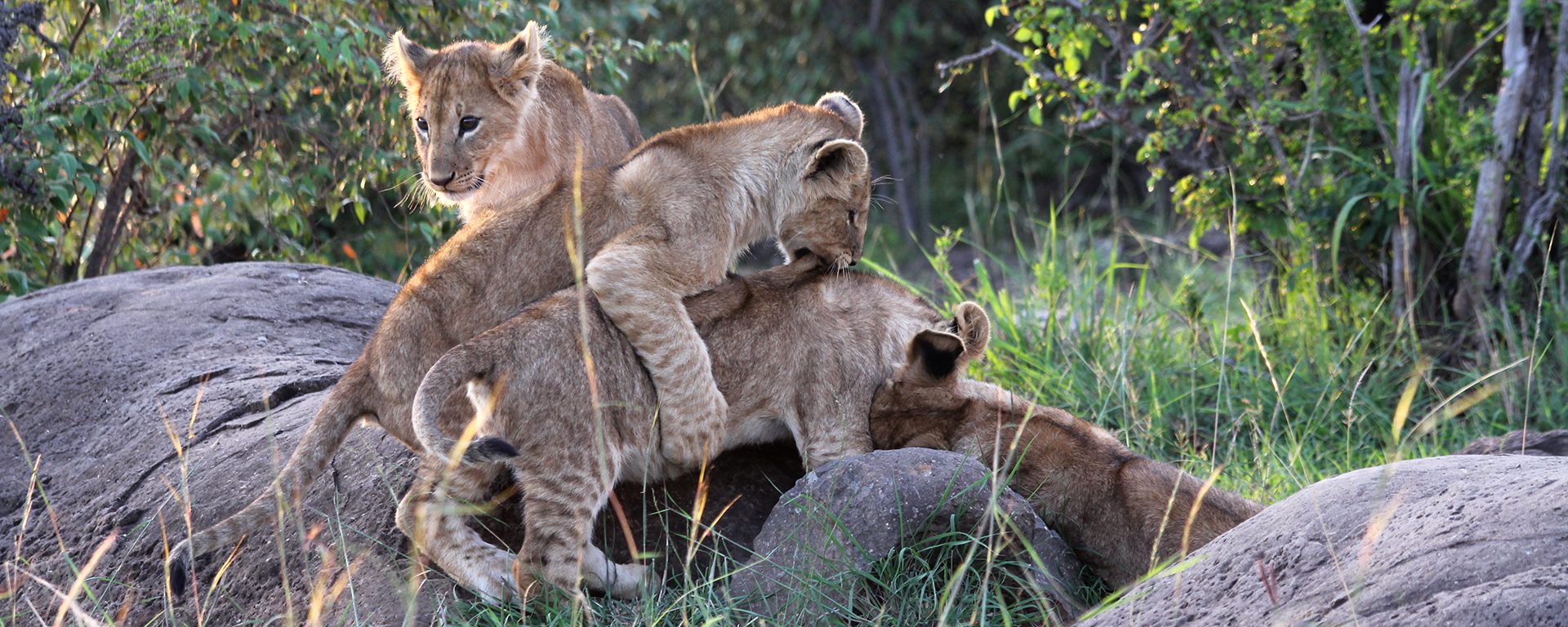
Rough-and-tumble with each other and patient adults develops the cubs’ ‘hand-paw’ co-ordination, strength and agility, which they will need to be successful hunters. Lions are ‘atrichial’ mammals meaning, like us and most predators, they have a long development span until they can survive on their own.
‘A photo album of lions isn’t complete without the standard “lions sleeping like house cats” picture. We were lucky to spot lions in various situations and family dynamics but there was also no shortage of lions catching forty winks in the Mara.’
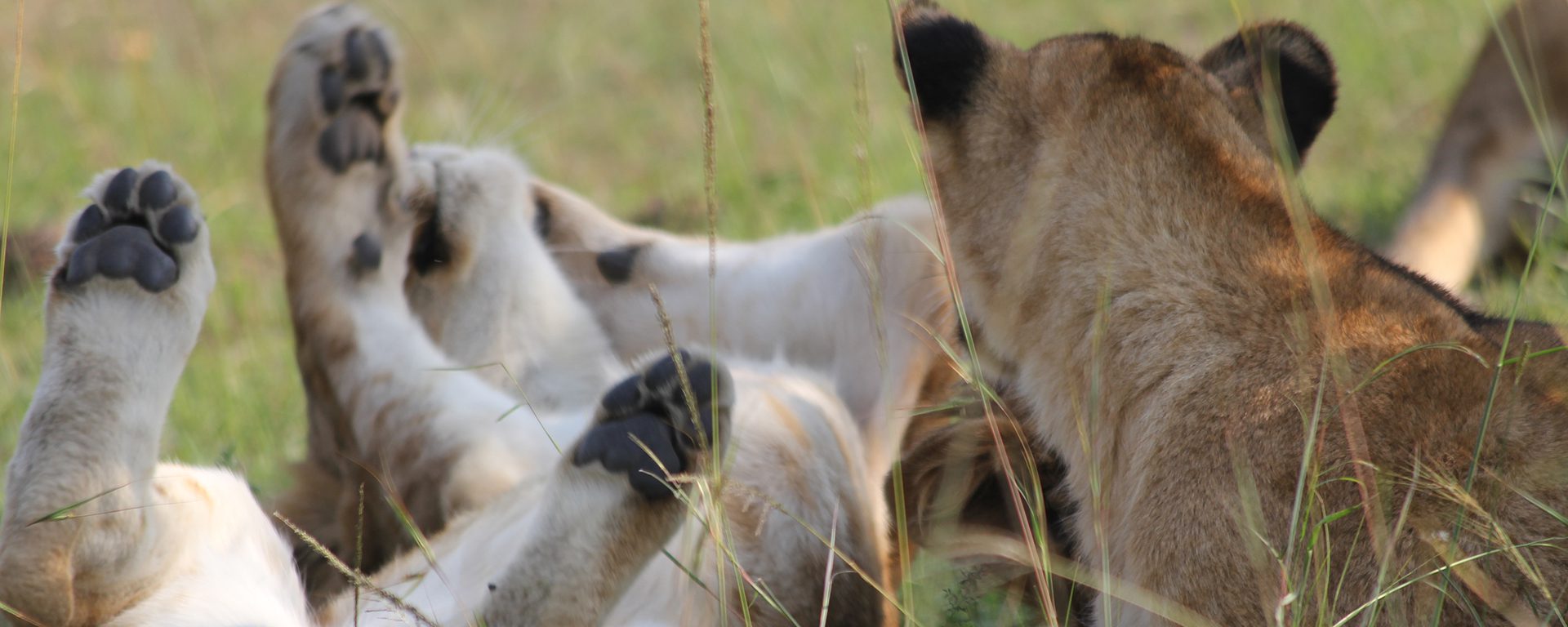
Scientists have debunked the idea that lions spend 20 hours of every day asleep, pointing out that because hunting is such an energy-draining activity, they have to preserve their resources for when it matters, which is why they seem to sleep so much. Male and female lions both patrol their territories – males have been recorded as clocking in as many as five miles or nine kilometres of walking in a day and can have thousands of hectares to mark as their ‘own’.
SERIAN NKOROMBO, MASAI MARA NATIONAL PARK
‘Moving into the national park for a couple of nights, I took some beautiful shots of lionesses and cubs just before dusk. The lionesses were some distance away from the cubs and it was so special to see them wake up and call their little ones. As soon as the cubs heard the calls, they dashed over to their moms – 100 percent sure of where to run!’
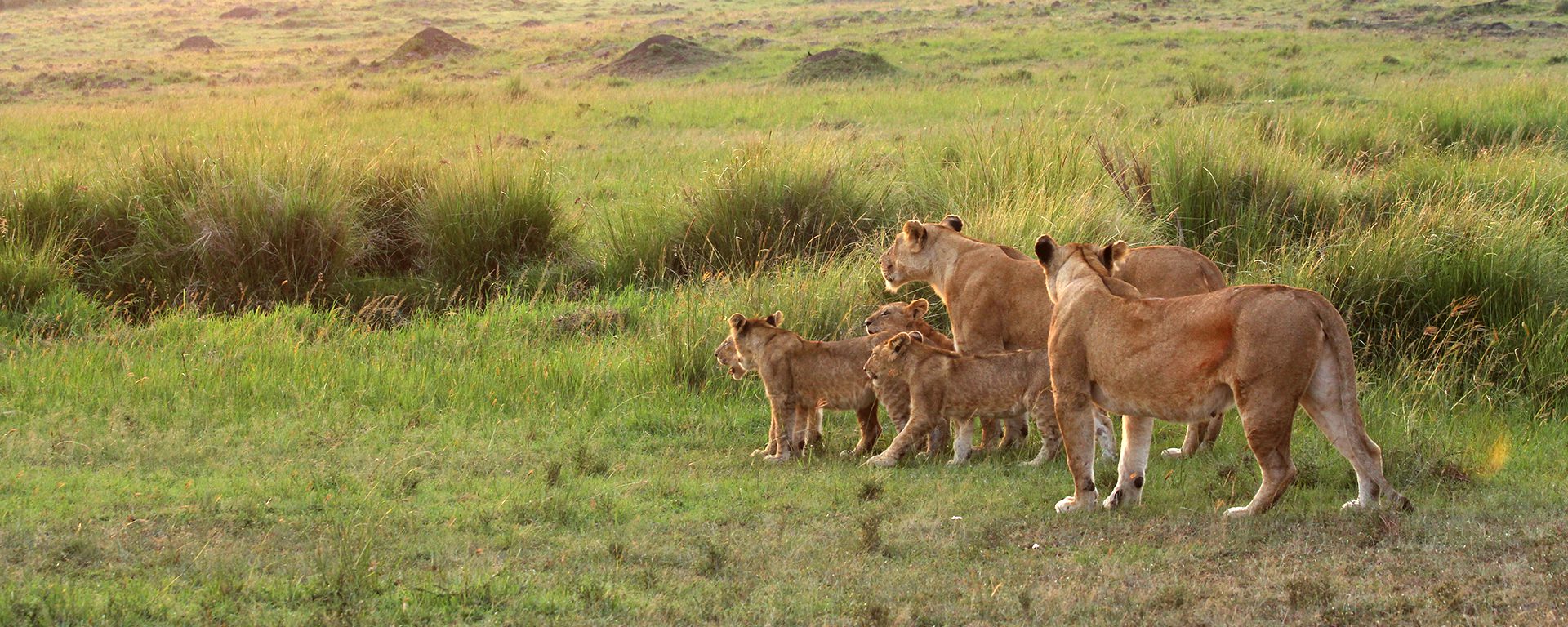
Lions have the most complicated communication system of all the big cats because they are the most social – no other felids in Africa live and hunt together like they do. In addition to calling softly for their cubs, lions can vocalise their way through a series of roars, puffs, meows, grunts, growls, snarls, purrs, hums and moans – all with very specific meanings.
‘That night, on the way back to camp, we came across a magnificent black-maned lion, who was just quietly sitting and observing his surroundings.’
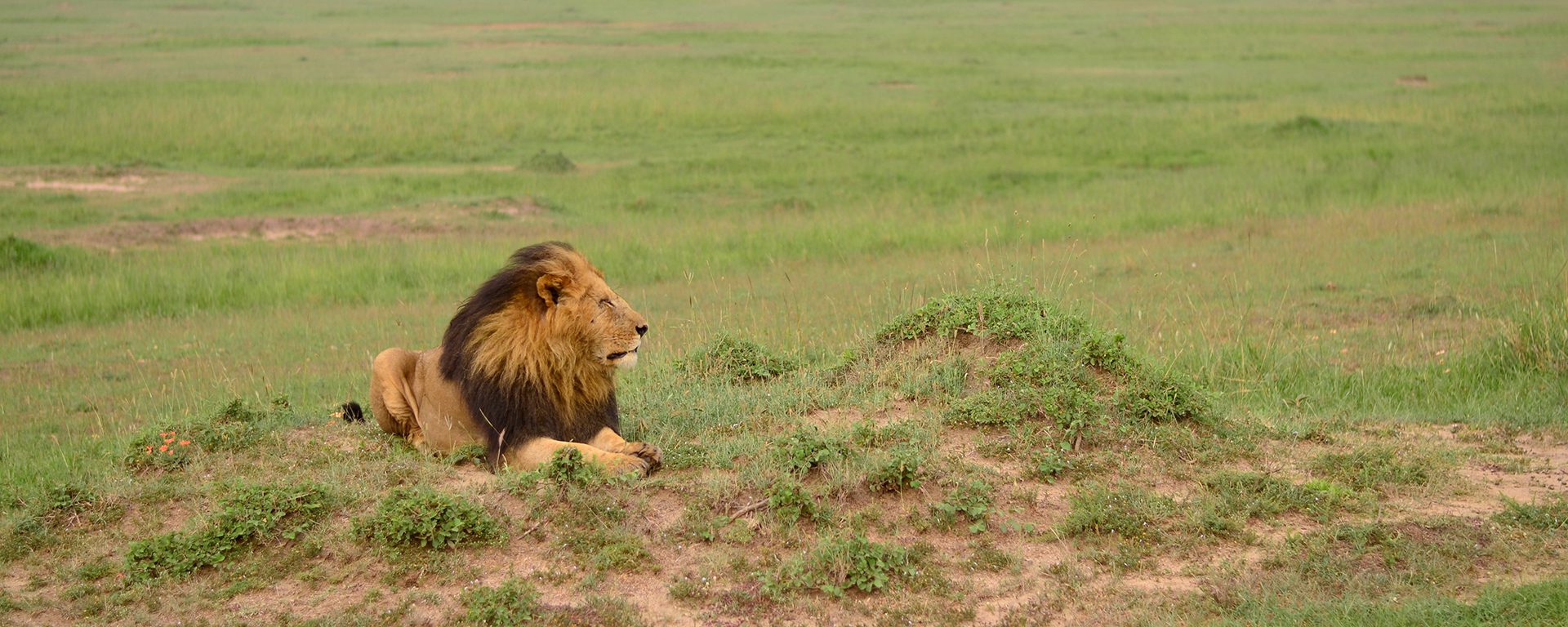
‘The next morning, on the way to the airstrip, we saw to him again – this time with a with a fresh buffalo kill. What’s unbelievable is that he took down this buffalo himself!’
Buffaloes are widely considered the most dangerous of all the plains animals: they’re unpredictable, aren’t known to give warnings before charging and can weigh up to 900kg or 2 000lb each. A buffalo could severely gore a lion’s body and herds have been known to chase predatory lions who were trying to pick off their calves into trees and keep them there for hours.
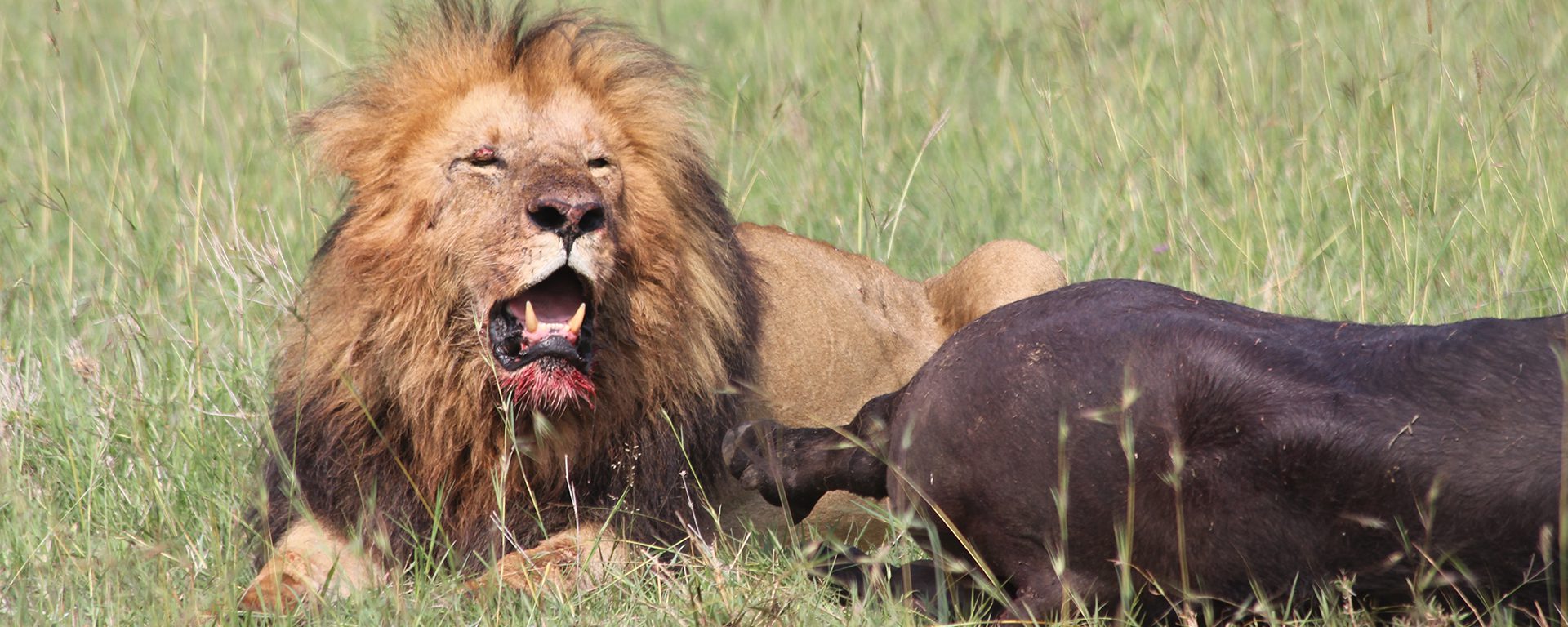
‘But the night’s hunt went in favour of the lion in that endless balancing act of survival that is played out every night in the Masai Mara. I wonder what ‘my’ lions are up to now?’

